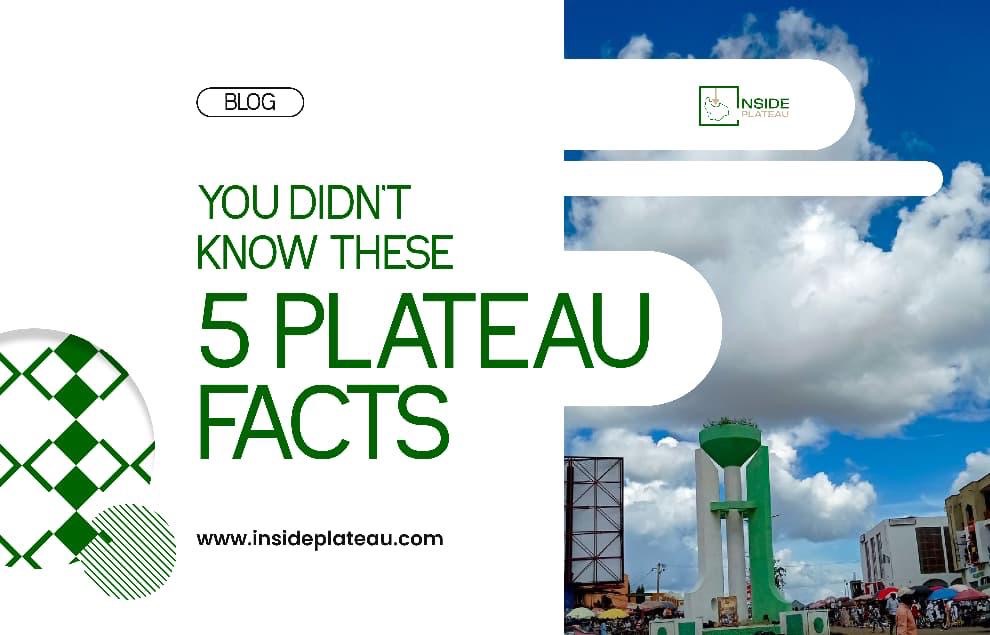Plateau State is often called the “Home of Peace and Tourism,” and with good reason. Beyond its famously cool climate, the state holds secrets in its rocks, rivers, history, and culture that make it truly one of a kind in Nigeria.
Think you’ve seen it all? Think again. Here are 5 fun facts you probably never knew about the State:
1. Nigeria’s Natural Antimalarial
Plateau State’s cool, elevated climate (1,200–1,829 meters above sea level) makes life difficult for malaria-carrying mosquitoes. That means fewer bites, and a lighter malaria burden compared to much of Nigeria.
Of course, locals still keep their mosquito nets handy just in case. After all, when Plateau says it’s the “Home of Peace and Tourism,” mosquitoes were never part of that invite list.
2. Mother of Rivers
The Plateau is described as Nigeria’s natural water tower. Perched high above sea level, its rainfall gathers into streams that grow into some of the north’s most important rivers.
From here flow the Kaduna River (a lifeline to the Niger), the Gongola River (feeding the Benue), and the Hadejia and Damaturu Rivers (which make their way toward Lake Chad). That’s why Plateau is often called the “water source of the north” its highlands quietly keep whole regions downstream fertile, green, and thriving.
3. Rocks From the Time of Dinosaurs
The Plateau rests on granite that formed about 160 million years ago, during the age of dinosaurs. Much later around 50 million years ago volcanic activity sculpted the dramatic basalt flows and gravity-defying rocks that still tower today.
So, the next time you lean on a boulder in Shere Hills or hike past one of Plateau’s famous formations, don’t just see stone. With a little imagination, you might just picture the dinosaur that once lived its life on that very surface.
4. Home of Nigeria’s Oldest Art
Did you know that when you walk into the Jos Museum (often called the Old Museum), you are not just stepping into a quiet relaxation spot? You are actually traveling back in time, all the way to around 500 BC?
The Nok terracotta sculptures mysterious clay figures dating back as far as 500 BC were first uncovered in central Nigeria, including parts of today’s Plateau, Kaduna, and Nasarawa States. These artworks come from the ancient Nok civilization, which thrived in the region over 2,000 years ago.
Jos became the guardian of these treasures in 1952, when the National Museum was established to preserve and study artefacts found during tin mining on the Plateau. Today, it holds one of the world’s richest collections of Nok art. So when you walk into the museum in Jos, you are not looking at some history—you are standing face to face with masterpieces that were born from the very soil of Plateau and its neighbors.
5. A Language Map in One State
Many people reduce Plateau to a simple culturally diverse landscape. The truth? Plateau isn’t just diverse in people, it is diverse in languages. The state is home to over 40 distinct ethnic groups, each with its own language, dances, foods, and festivals. From the powerful rhythms of Mwaghavul drums to the colorful Afizere masquerades, every community adds a note to Plateau’s living symphony.
Linguists call Plateau a “language hotspot,” where villages only a few kilometers apart often speak entirely different tongues. It’s one of the few places on earth where diversity is this concentrated.
Anything But Plain
If you ever thought Plateau State was just “cold weather and tin mines,” you’ve been missing the bigger picture. This is the land where mosquitoes pack their bags, where rivers are born, where rocks remember the age of dinosaurs, where ancient artists left their mark in clay, and where over 40 cultures dance, sing, and speak their truths.
Plateau is not plain it is Nigeria’s highland crown. And if you still think otherwise? Well, then you’re the only one not in on the secret.

